A quincunx (pronounced kwin-kunks) is simply a cluster of five points arranged as on a die.
![]()
One finds the pattern everywhere, from the common arrangement of trees in an orchard, to the exalted arrangement of domes on a church.
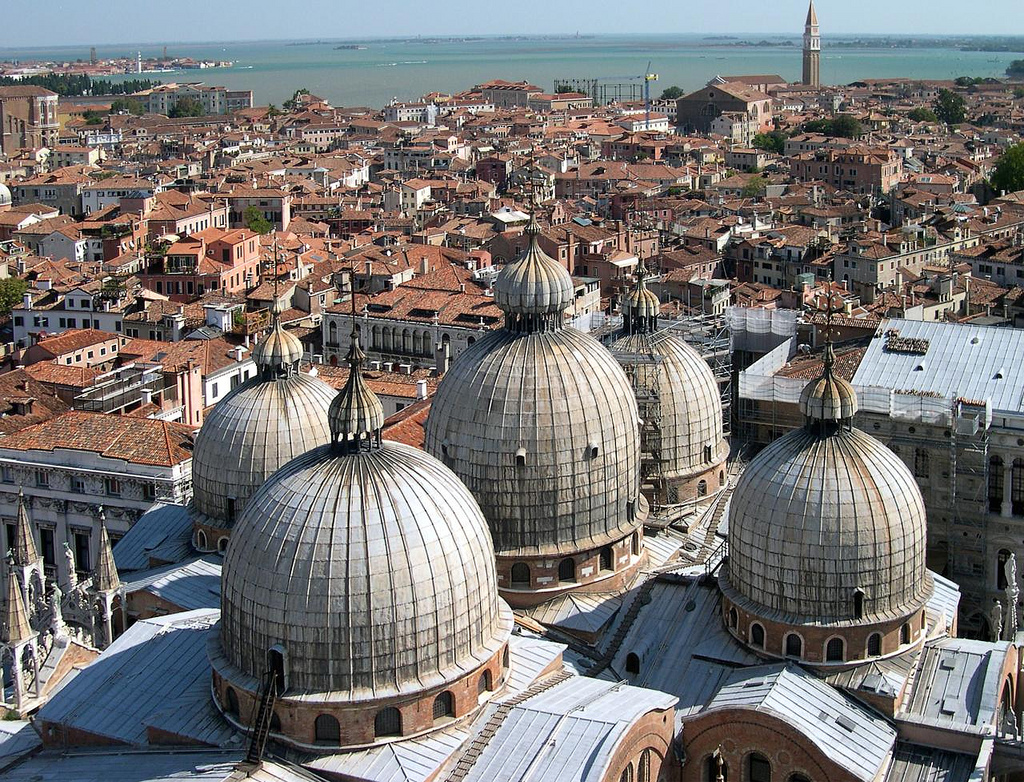
St. Mark’s, Venice
[Photo by Dave Curtis]
There is much more to the pattern than it might at first seem. In fact, in pagan antiquity, the pattern was understood to be a geometric emblem of an ordered world. And after the Christian revelation, a summary of a sanctified universe.
The ancient Romans, who sought to bring physical order to their world, saw that the sun suggested an ideal diagram which should be imitated. The sun’s movement through the celestial sphere divided the world into four cardinal directions: north, south, east, and west. The very word cardinal derives from the Latin for hinge: the hinge on which hangs the sun.
So they designed their cities with two principal roads. One road, called the Cardo, ran from the city’s center to the northern gate and to the southern gate, and another road, called the Decumanus, ran from the center to the western gate and to the eastern gate. Four principle quarters were created by the crossroads: northeast, southeast, southwest, and northwest. The city was a nine-square geometry and it was a microcosm of the world.
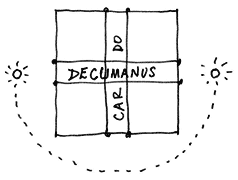
Inside its walls is order and civilization, in which the architecture puts everything in its place and shows the place and meaning of every thing. One is always perfectly oriented in a nine-square as one can easily understand one’s relationship to the center. Outside the walls there is chaos, where there are no signposts, where one does not know where one stands or the right way to go. It is rightly said that the Romans invented the city.
With the Incarnation and Christian revelation, the natural world is now understood to foreshadow a supernatural destiny. Consider this passage from the Book of Revelation in which John is shown the Heavenly Jerusalem.
And [the angel] carried me away in the Spirit to a mountain great and high, and showed me the Holy City, Jerusalem, coming down out of heaven from God. … It had a great, high wall with twelve gates, and with twelve angels at the gates. On the gates were written the names of the twelve tribes of Israel. There were three gates on the east, three on the north, three on the south and three on the west. The wall of the city had twelve foundations, and on them were the names of the twelve apostles of the Lamb. … I did not see a temple in the city, because the Lord God Almighty and the Lamb are its temple. The city does not need the sun or the moon to shine on it, for the glory of God gives it light, and the Lamb is its lamp. (Revelation 21)
The Heavenly Jerusalem is a nine-square. Note the parallel between the natural world and the Old Covenant. Just as the twelve tribes and the Passover lamb of the Old Covenant foreshadow the twelve apostles and the Paschal Lamb of the New Covenant, so the sun of our natural world foreshadows God’s glory.
With the introduction of this supernatural destiny to the nine-square, however, it is natural to want to introduce the circle. If the square is an emblem of the earth, the circle is the geometry of heaven. No special revelation is needed to see this, as the shape imitates the dome of the sky, it has no beginning and no end, and all points on it are equidistant from the center. This is why the Pantheon is a large dome: it symbolized the dwelling of all the gods.
As there is only one God, the place for the circle is the center of the nine-square. The combination of the circle and the square describes the aspiration of earthly things toward heaven in general, and Christ’s dual natures (human and divine) in particular. In fact, the very geometry of the human body suggests the combination. This famous diagram comes from the pagan Vitruvius who said of man that he is
naturally gifted beyond the other animals in not being obliged to walk with face to the ground, but upright and gazing upon the starry firmament…
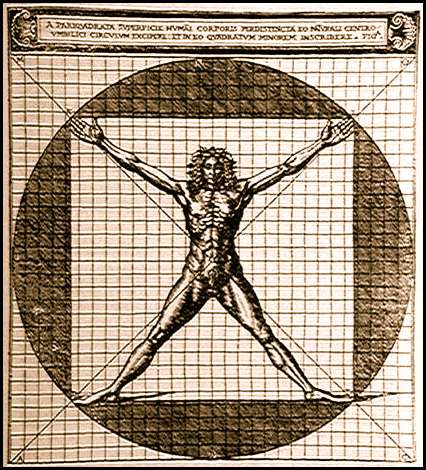
Cesare Cesariano’s illustration of Vitruvius’s text, more geometrically unified than Leonardo’s famous drawing, as the circle and the square share the same center.
One might even go so far as to say that Christ with His dual natures is the fulfillment of Vitruvian man.
Note that a St. Andrew’s cross runs through the diagram as well. And to complete it, because the number four is so important (four Evangelists, four cardinal virtues) four smaller circles are added to the first as if to provide an echo, both literal and metaphorical, in the quadrants.
Taking stock, we have a center, a square, a circle, and two crosses (a Greek cross and a St. Andrew’s cross) in one harmonious arrangement. It tells us that the physical universe, and God’s salvific plan for it, compose a single coherent whole. I know of no richer symbol. Here are a few of its geometric permutations.
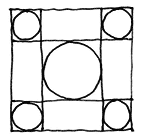 The basic diagram.
The basic diagram.
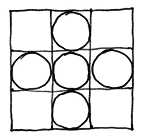 Rotated.
Rotated.
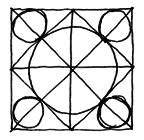 Circles tangent to one another.
Circles tangent to one another.
The quincunx can be a floor pattern, as it often was in the work of the Cosmati. They were designed to complement the rite of consecration of the church.
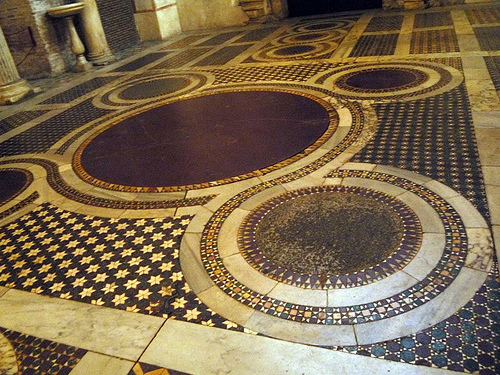
Cosmatesque Quincunx at S. Maria in Cosmedin. The central roundel was often made of porphyry to symbolize Christ’s royalty. See Paloma’s book Cosmatesque Ornament for more.
Or it can be brought out in three dimensions, as it was at St. Mark’s in Venice, and in the large number of churches in the East where centrally planned churches are the norm.
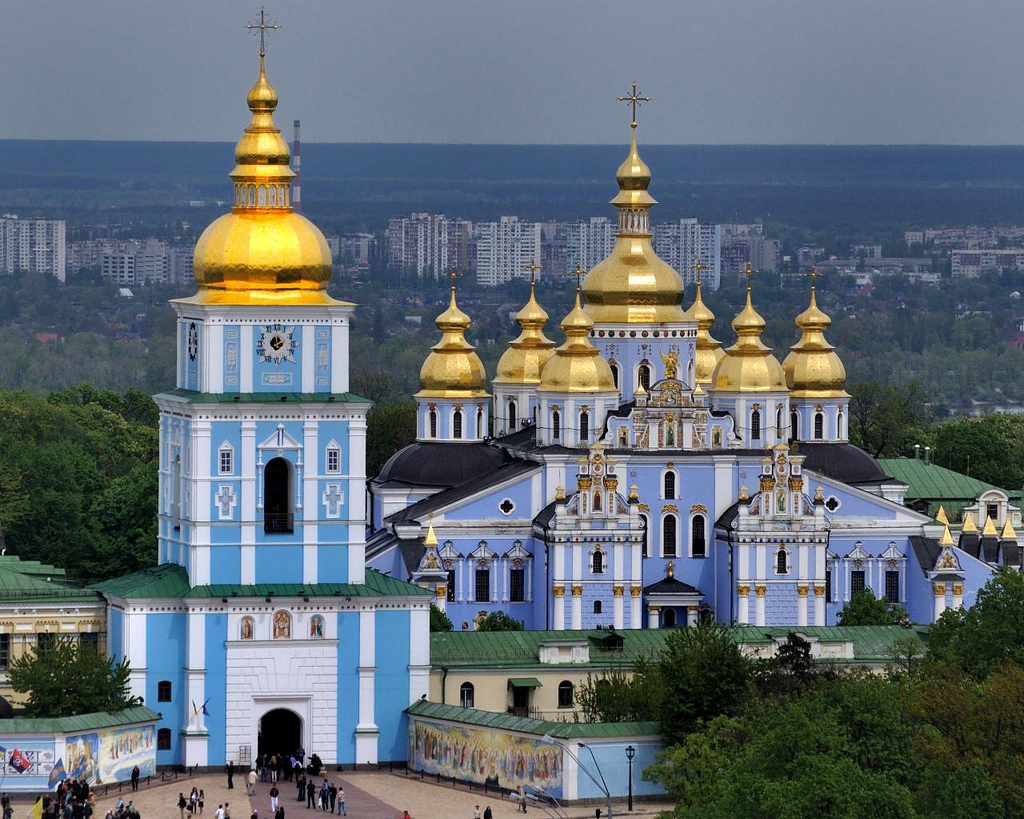
St. Michael’s Monastery in Kiev. Domes over side chapels are here added to the quincunx which defines the central mass of the church.
[Image Source]
So the next time you see a quincunx, remember that it is much more than the latest from Karl Lagerfeld, or a pleasing geometric pattern. It is your universe.
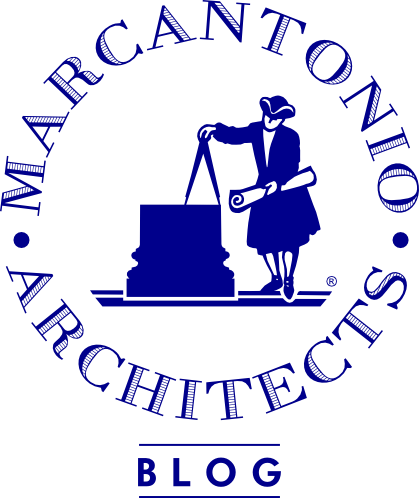
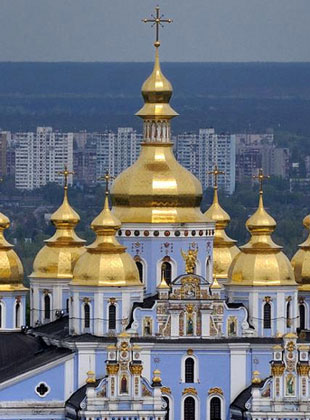

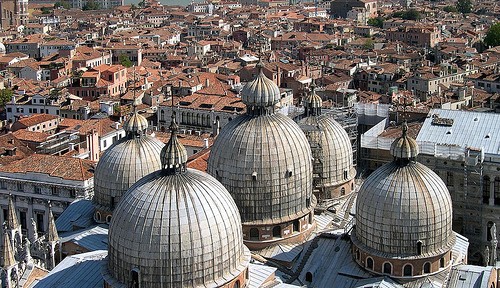

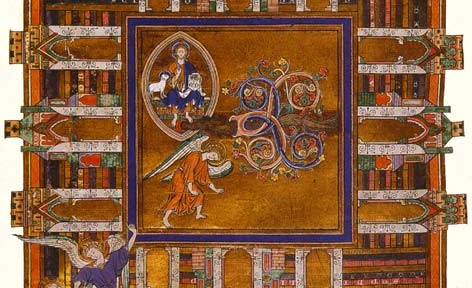
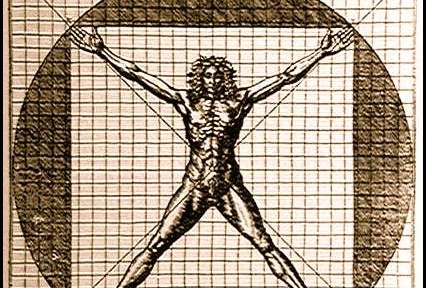



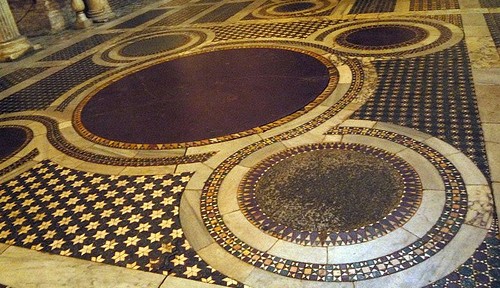
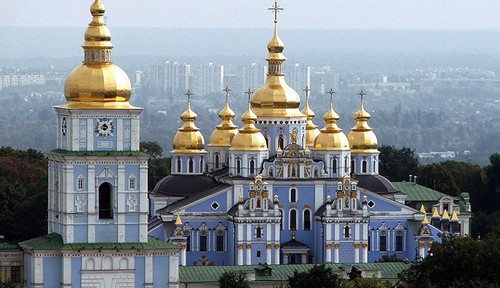
![St. Mark's, Venice
[Photo by Dave Curtis]](https://www.marcantonioarchitects.com/blog/wp-content/uploads/2011/01/St-Marks-Domes-310x420.jpg)
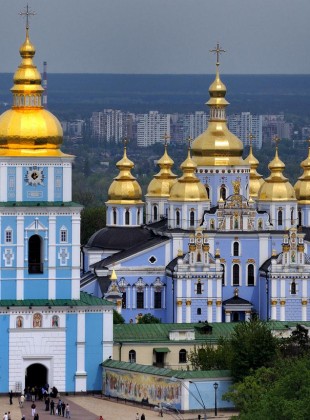
What is also interesting is how the arrangement of Holy Apostles in Constantinople, which had the five dome arrangement, influenced other churches.